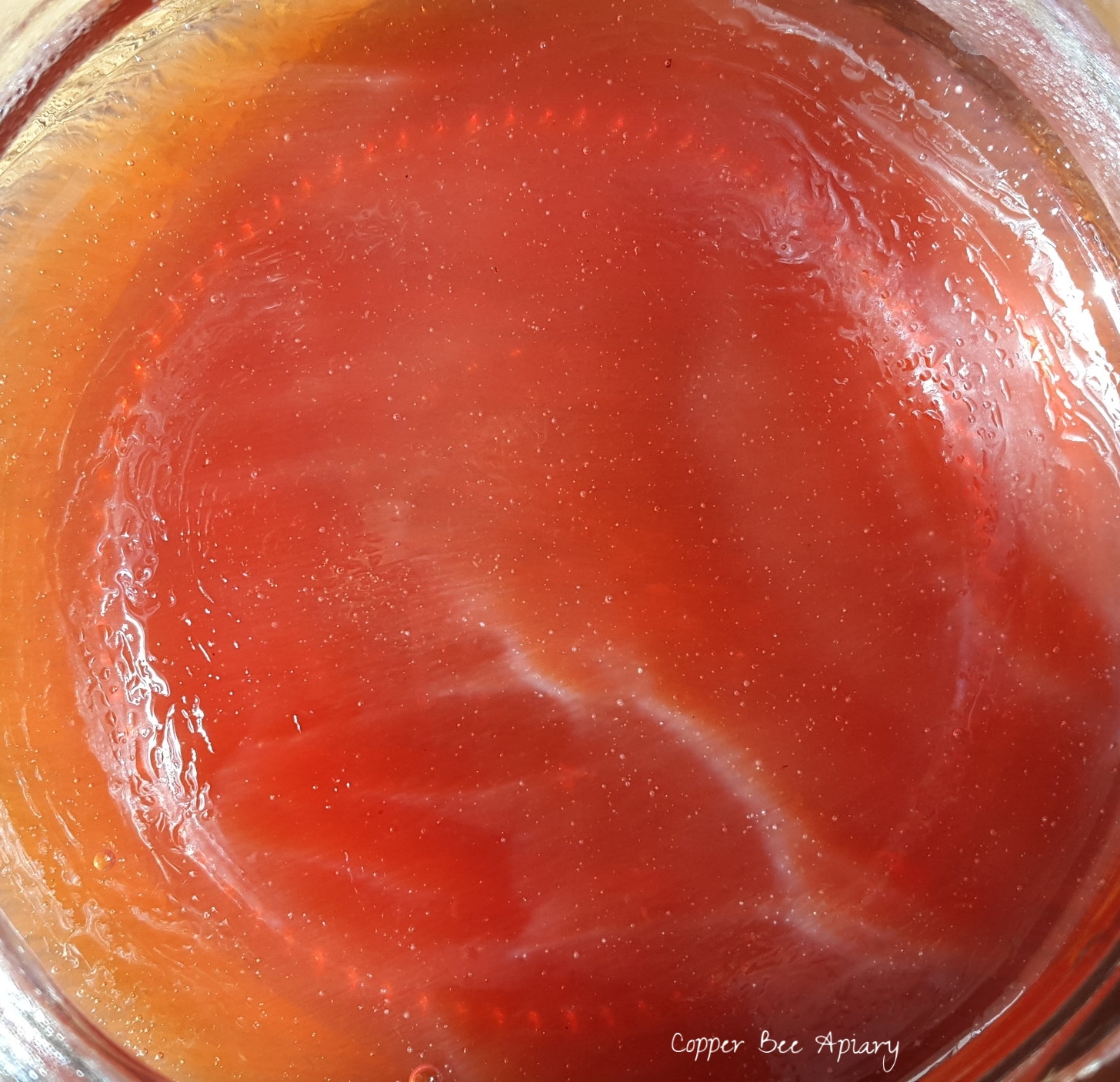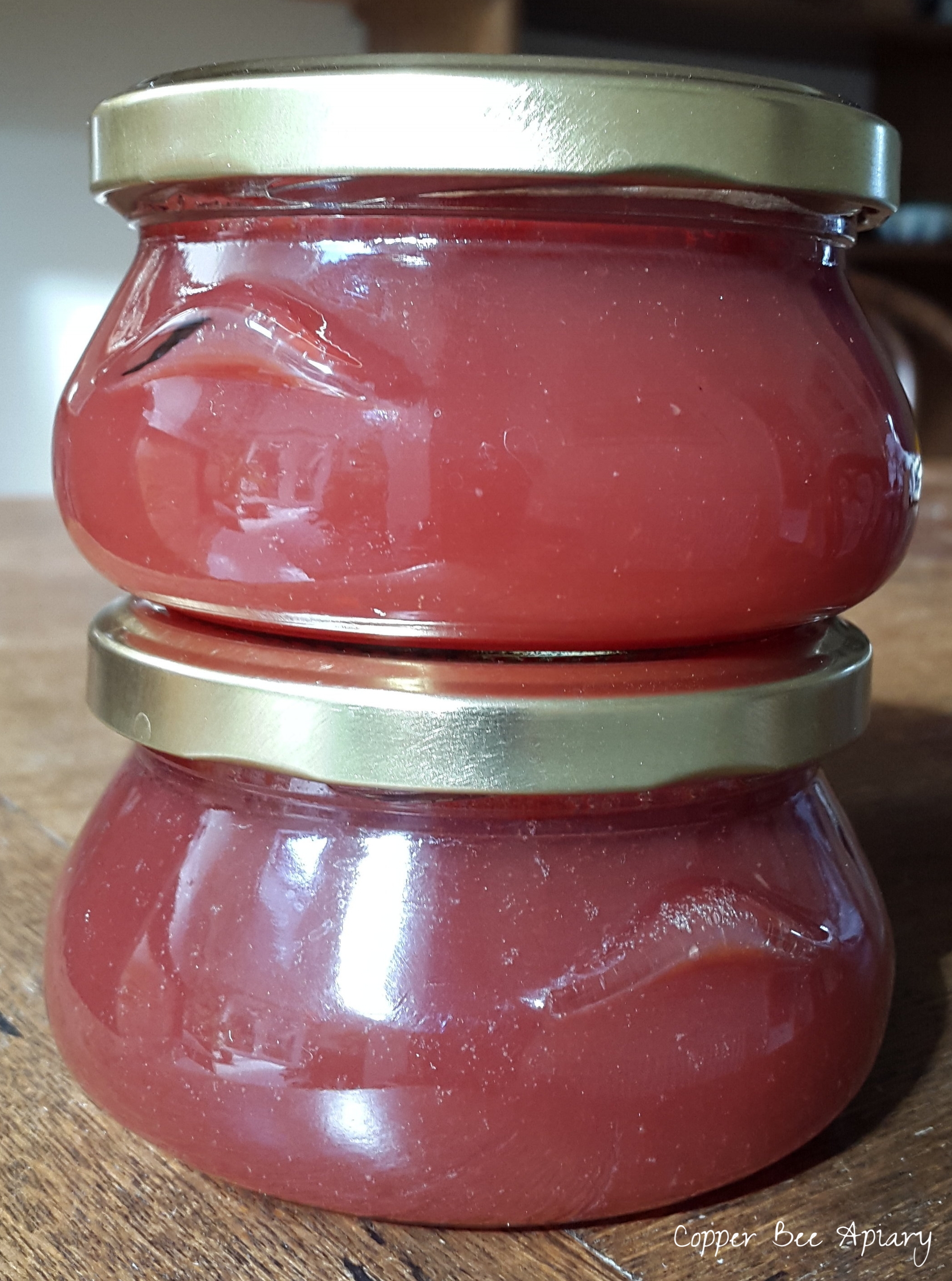The quince tree produced a bumper crop of about 15 this year. Growing in the midst of so many beehives, it was of course very well pollinated! Optimistically I prepared 8 clean jars as I set about making quince jelly with honey. In the end I filled just two jars. A deep red colour. That's a lot of quinces concentrated into each jar. To be enjoyed with cheese and walnuts at Christmas...if it lasts that long!
A deeper shade of orange, and a glimpse into the materialistic mindset of your favourite beekeeper.
Read More
If you think that beekeeping is all about honey, then this post is for you.
Read More
My photo album indicates that the almond tree flowered in January last year. This year, it's late, having waited until March for bud burst. It's flowering whole-heartedly now though.
Almond trees are (supposed to be) one of the earliest trees to flower. Which is helpful for the bees, who need that early nectar and pollen to get going at the start of the season. And my hope is that this tree will grow tall and provide a little shade and screening for the hives that stand against the South-facing house wall.
The tree fruited last year and we enjoyed a few almonds. Or I did, anyway. Other household members found them unfamiliar and suspicious objects in their green cases.
We have a Christmas Box (Sarcococca) in the front garden, covered in sweet flowers, which the bees have been visiting.
They seem to be collecting nectar rather than pollen. Their pollen baskets are empty and I think in a couple of the photos you can see that they are extending their tongues into the base of the flowers. Here's a close-up:
Incidentally, a word about photographing bees on flowers. Bees are too busy to pause for many Kodak moments. And if they do, you can be sure my camera will be focusing on something else. I suppose that's why BBC Wildlife Photographer of the Year tends not to be won by people who've just whipped a camera phone out of their pocket.
Anyway, I had some questions. Are those flowers really producing nectar? Does the nectar taste like the flowers smell? Would honey from the nectar taste like that too? Try tasting the flowers...yes, I think there is a sweetness there.
Under the microscope, I tried to see whether there was nectar at the base of the flowers. Removing the stamens to get a better look, I saw a shiny green middle, and perhaps knocked some tiny drops of nectar from it on to the petals...but I'm not sure.
Early nectar is vital for the honey bees. In the hives, brood numbers are growing while honey reserves are dwindling.
They need pollen too, but they seem to be finding that, as bees return to the hive laden with full pollen baskets.
In the apiary we have a few crocuses, which the birds have thoughtfully eaten the petals off to help the bees get to the pollen.
There is also this plant, which for some time I tried to eradicate from romping round the pond, but my efforts were unsuccessful:
It turns out to be the Winter Heliotrope. Apparently it is a good source of early nectar, although I have not subjected it to the same investigations as the Christmas Box. Anyway I am now pleased to have it here for the bees. It turns out that this plant is rather like the Ents from the Lord of the Rings, insofar as it has male and female forms but only the males are to be found. The plant was introduced from Africa, but only the male. The female plants are absent from Britain. Welcome to Copper Bee Apiary, Winter Heliotrope.


















